Articles and Presentations
New Online Presentation "S-57 to S-101 Transition" Now Available!
We are pleased to announce the release of a new online presentation titled "S-57 to S-101 Transition", focused on the key aspects of migrating from the traditional S-57 format to the modern S-101 standard.
This presentation provides valuable insights into the transition concept, changes in data structure, and practical approaches for adapting your cartographic production to S-101.
We are pleased to announce the release of a new online presentation titled "S-57 to S-101 Transition", focused on the key aspects of migrating from the traditional S-57 format to the modern S-101 standard.
This presentation provides valuable insights into the transition concept, changes in data structure, and practical approaches for adapting your cartographic production to S-101.
Discover dKart Evolution – Navigating the Future of Maritime Data
This presentation outlines the transition from S-57 to a combined S-57/S-101 environment using the innovative dKart Evolution platform. Learn how tokenization, automation, and next-generation editing tools help overcome the challenges of budget constraints and resource demands during the S-100 migration. A must-read for professionals in maritime cartography and digital navigation.
This presentation outlines the transition from S-57 to a combined S-57/S-101 environment using the innovative dKart Evolution platform. Learn how tokenization, automation, and next-generation editing tools help overcome the challenges of budget constraints and resource demands during the S-100 migration. A must-read for professionals in maritime cartography and digital navigation.
Join us as we dive deep into the complexities of S-101, the new international hydrographic standard that’s set to replace S-57. We discuss its purpose, the challenges it poses, and its implications for hydrographic offices and technology providers. Is S-101 truly revolutionary, or just another costly transition? Tune in to explore its benefits, drawbacks, and whether it’s really worth the investment.
In this episode, we discuss the challenges of implementing the S-100 hydrographic standards, focusing on inconsistencies and interoperability issues. We delve into the limitations of transitioning from S-57 to S-101 and propose the S-157 solution as a cost-effective and practical approach to ensure seamless integration. Tune in for insights on the future of navigational data standards.
In this episode, we dive into the role of Electronic Navigational Charts (ENCs) in autonomous navigation. The discussion explores how ENCs, originally designed for manual navigation, often lead to data overload, hindering automation. We also cover challenges like bathymetric data gaps and propose solutions to make ENCs more compatible with automated route generation for safer, more efficient navigation.

The presentation features the dKart Evolution S-101 system, which describes the transition from hydrographic standards S-57 to S-101, focusing on automation, data compatibility, and cost-efficiency. We offer a "token-based" linguistic model for converting S-57 to S-101 and propose the use of automation modules such as dKart TOKENIZER and DELTA to streamline the chart creation process and ensure a gradual transition.
The transition from the S-57 standard to S-101, powered by the S-100 Universal Data Model, promises to revolutionize marine cartography and navigation. But what’s behind this shift? In this video, Michael Reeves explores:
The key benefits and challenges of transitioning to S-101.
Why automation and data quality are crucial.
How dKart Evolution (TOKENIZER and DELTA modules) simplifies the process.
Find out if the transition is truly worth the effort or just a rebranding exercise.
The key benefits and challenges of transitioning to S-101.
Why automation and data quality are crucial.
How dKart Evolution (TOKENIZER and DELTA modules) simplifies the process.
Find out if the transition is truly worth the effort or just a rebranding exercise.
To assess the quality of any technical solution, one must clearly understand the problem it is intended to solve. Without understanding the task, it is impossible to find the right solution — and S-100 is no exception. However, when it comes to understanding the purpose behind implementing new hydrographic standards, we encounter a number of fundamental difficulties.
S-100 is the revolution. Really?
24-APR-2025
Maritime navigation has evolved significantly over the years, transitioning from traditional paper charts to sophisticated electronic navigational systems. dKart Inspector is at the forefront of this evolution....
dKart Inspector: Ensuring Maritime Navigation Safety through Advanced Chart Validation
15-JAN-2025
This article explores the transition from the S-57 to the new S-101 hydrographic standard, developed by the IHO. It examines the objectives, key differences, and potential challenges associated with this shift. The analysis questions whether the change truly enhances data interoperability and discusses its implications for Hydrographic Offices, technology providers, and navigators, highlighting the financial and operational risks involved in adopting S-101.
Understanding S-101
05-DEC-2024
The article explores challenges in maritime navigation, highlighting the limits of current ENCs for autonomous route planning. It suggests that information overload and outdated paper-based chart designs hinder automation. A proposed approach involves improved bathymetric data and algorithms to automatically calculate safe routes, addressing deficiencies in depth data and proposing ways to enhance ENCs for reliable automated navigation.
ENC for Autonomous Navigation
07-NOV-2024
This article examines the primary challenges in implementing S-100 hydrographic standards, highlighting inconsistencies in interoperability and the costly transition from S-57 to S-101. It proposes the S-157 solution, a method of encapsulating S-57 data within the S-100 framework, offering a streamlined, cost-effective approach for a smoother, gradual transition to modernized navigational data standards.
What is Wrong with S-100
23-AUG-2024









